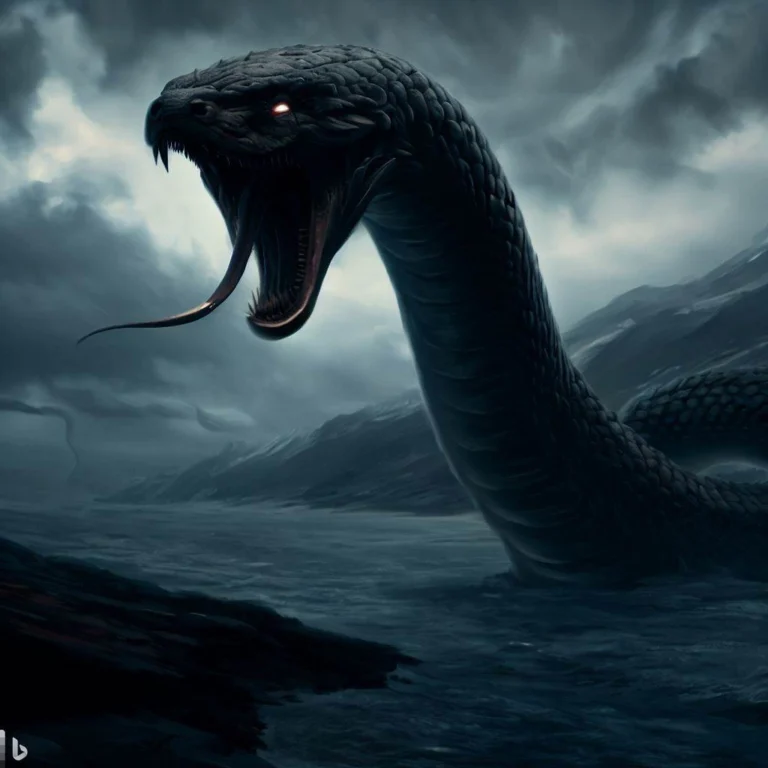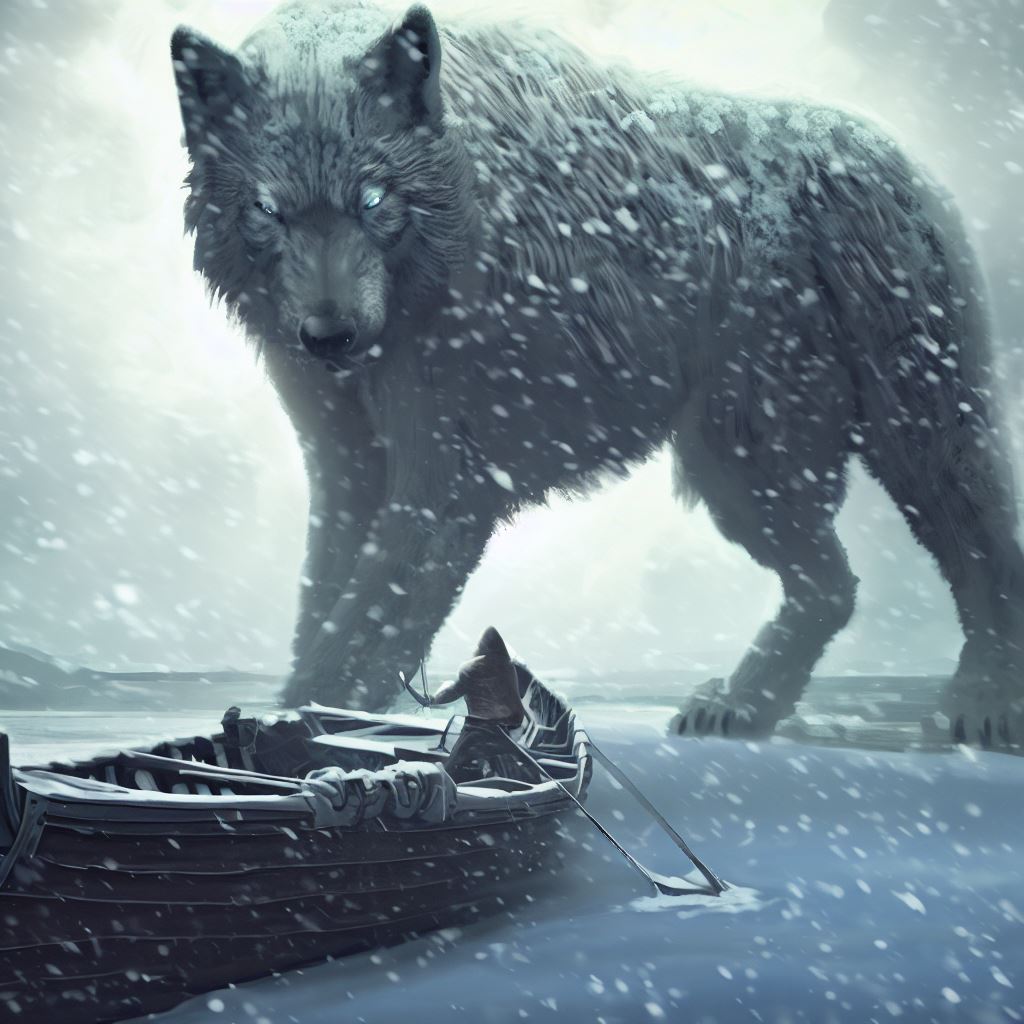
Fenrir is one of the most fearsome and fascinating characters in Norse mythology. He is a giant wolf who is prophesied to kill Odin, the chief god, during Ragnarok, the end of the world.
Fenrir is also the son of Loki, the trickster god, and Angrboða, a giantess who gave birth to other monstrous offspring, such as Jormungandr, the world serpent, and Hel, the goddess of the underworld.
Fenrir’s existence and importance are attested by various sources, such as the Poetic Edda and the Prose Edda, two collections of ancient Norse poems and stories that preserve the myths and legends of the Norse people.
In this article, we will explore Fenrir’s appearance, powers, destiny, binding, and final battle.
We will also provide some background to the two names of Fenrir which are Fenrir and Fenris and explain the origin and the difference in names.
ads content
Fenrir Vs Fenris what’s the difference?
Fenrir is the original name of the wolf in Old Norse, meaning “fen dweller” or “he who dwells in the marshes”.
Fenris is a shortened form of Fenrisúlfr, which means “wolf of Fenrir” or “the wolf called Fenrir”.
Fenrisúlfr is a later addition to Norse literature, possibly influenced by the Latin word lupus, which also means wolf.
Some sources use Fenrir and Fenris interchangeably, while others distinguish them as different aspects of the same being.
Fenrir’s Origins and Family
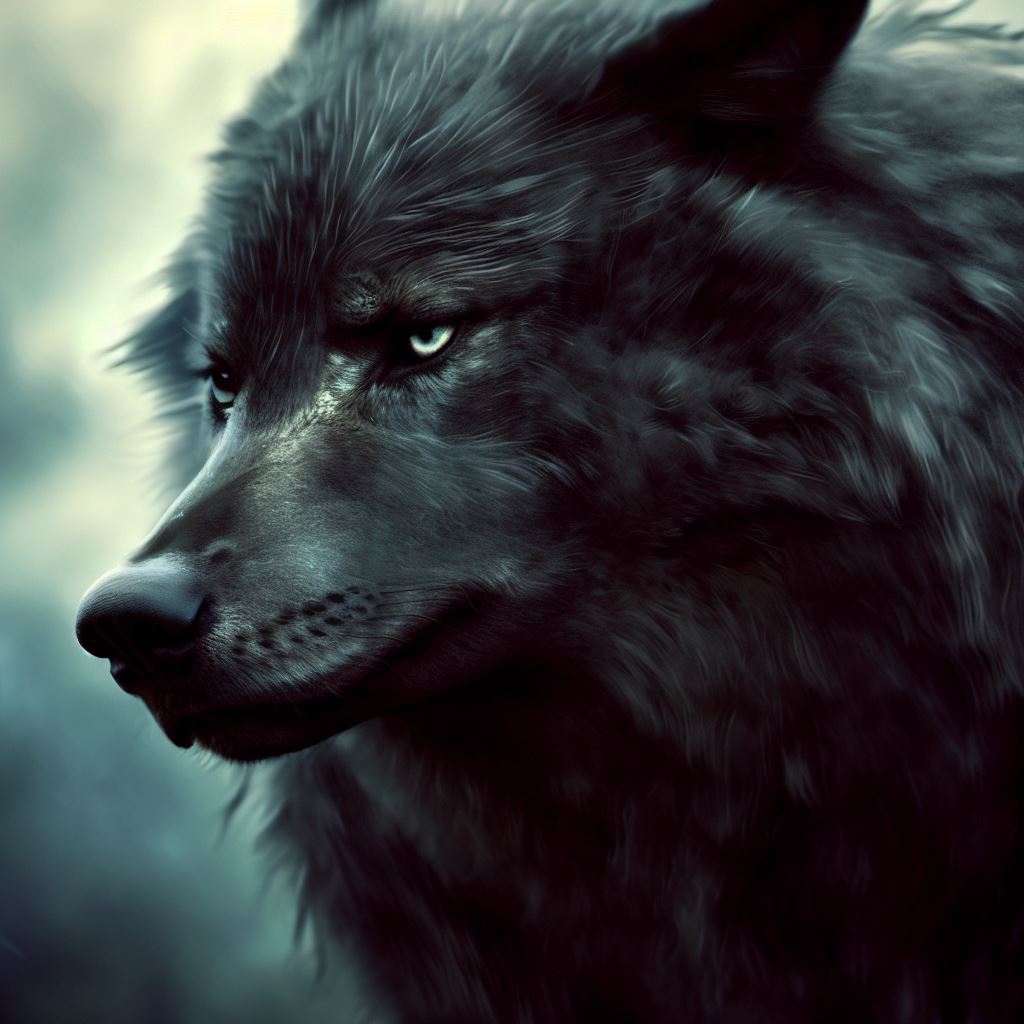
In Norse mythology, Fenrir was one of three children birthed by the god Loki and a giantess named Angrboda.
Their other offspring were Hel, goddess of the underworld, and the great sea serpent Jörmungandr.
The children of Loki and Angrboda were feared by the other Norse gods due to their rapid growth and chaotic, uncontrollable nature.
Of the three, Fenrir grew the fastest and was the most wild, taking the form of a massive wolf.
The gods were immediately wary of Fenrir’s strength and volatility.
They decided Fenrir could not be allowed to roam free, so they resorted to trickery to try and contain his power.
Read more about Fenrir’s origins and relations at Norse Mythology for Smart People.
Fenrir’s Binding
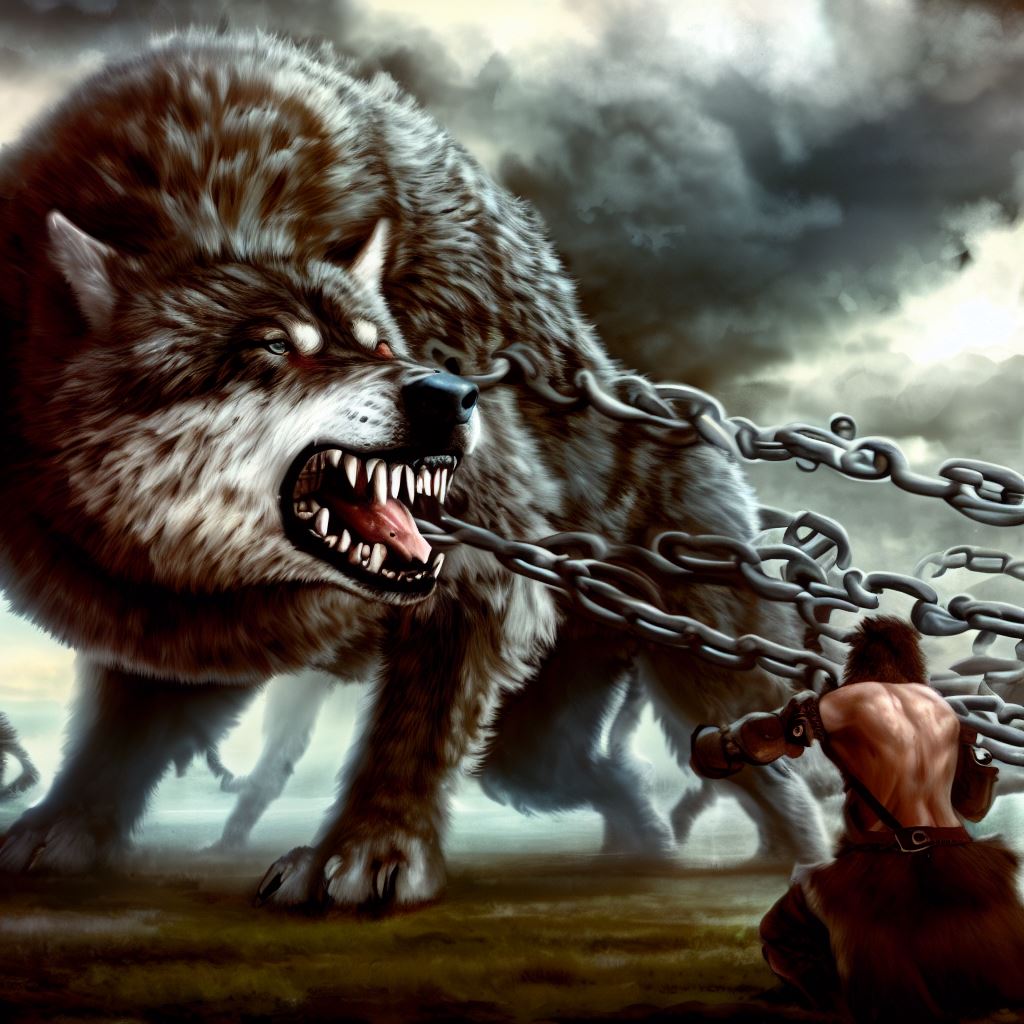
The Norse gods made several failed attempts to bind and contain the growing Fenrir using normal chains.
Each time, Fenrir would easily break free of his bonds, increasing the gods’ fear.
Finally, the dwarves constructed a magical binding called Gleipnir, made impossibly strong from ingredients like the sound of a cat’s footfall and a woman’s beard.
Fenrir did not trust the gods’ intentions with Gleipnir, so he refused to be bound by it unless one of them would put their hand in his mouth as a show of good faith.
The god Tyr bravely agreed to this, and Fenrir was bound. However, once he realized the strength of Gleipnir, in his rage Fenrir bit off Tyr’s hand before the gods could fully restrain him.
Though bound, Fenrir’s anger at the gods’ deceit festered, and he waited for the day his strength would allow him to break free and unleash his revenge.
Read more about the gods’ binding of Fenrir at Ancient Origins.
Fenrir vs Odin in Ragnarok
In Norse mythology, Ragnarok represents a great apocalyptic battle between the gods and their enemies that ends the current world.
During Ragnarok, Fenrir finally fulfills his destiny to gain vengeance upon the gods who had bound him.
Fenrir breaks free of his Gleipnir bindings and runs rampant on the battlefield. He swallows the god Odin whole, killing him.
He also kills other important gods like Freyr and Heimdallr during his rampage.
Fenrir serves as a key force of destruction during Ragnarok, fueled by his hatred of the gods born from their deceit long ago.
Eventually Fenrir is slain at Ragnarok by Odin’s son Vidar, who drives a great sword through the wolf’s throat.
But Fenrir leaves a great path of death and destruction in his wake.
For an overview of Ragnarok and Fenrir’s role, see the Encyclopedia Britannica.
Fenrir as a Symbol in Norse Culture
As a mythological figure, Fenrir took on greater symbolic meaning to the ancient Norse people beyond just a giant wolf.
His unrestrained form represented destructive, chaotic forces in the natural world.
But he also embodied concepts like courage, ferocity, and the fight for freedom from oppression.
For Norse warriors heading into battle, Fenrir served as an inspiration for harnessing one’s inner strength and wildness.
His rage against the gods who bound him unjustly spoke to ideals of independence and resistance to tyranny.
Overall, Fenrir personified primal instincts within man and nature, viewed both with fear and awe by the ancient Norse people.
His myth served as both a cautionary tale and a source of inspiration.
Fenrir’s Appearance and Characteristics
Fenrir’s appearance is described in various ways in the sources, but they all agree that he is a colossal and terrifying wolf.
According to Snorri Sturluson, the author of the Prose Edda, Fenrir’s lower jaw touches the ground and his upper jaw reaches the sky when he opens his mouth.
He also says that Fenrir has fiery eyes that glare like lightning. In another poem from the Poetic Edda, Völuspá, Fenrir is called “the best of wolves” and “the foremost of all evil”.
Fenrir’s size and strength grow exponentially as he ages, making him a formidable foe for the gods.
He can swallow anything in his way, including Odin himself. He is also very ferocious, cunning, hungry, and resistant to magic.
He can sense when someone tries to deceive or harm him, and he does not hesitate to retaliate.
For example, he bites off Tyr’s hand when he realizes that he has been tricked into being bound by Gleipnir.
He also escapes from various fetters that the gods try to use to restrain him before Gleipnir.
Fenrir’s Final Battle and Death

Fenrir breaks free from his bonds at the onset of Ragnarok, along with his father Loki and his brother Jormungandr.
He joins the forces of the giants and the monsters against the gods and their allies.
He rampages across the world with his mouth wide open, devouring everything in his path, including Odin.
According to Vafþrúðnismál, Odin will fight Fenrir for a long time, but he will eventually fall prey to the wolf.
According to Völuspá, Odin will go to face Fenrir with his spear Gungnir, but he will be swallowed by the wolf.
Fenrir’s killing of Odin is one of the most tragic and dramatic events in Norse mythology, as it marks the death of the chief god and the leader of the Aesir.
However, Fenrir’s victory is short-lived, as he is avenged by Odin’s son Vidarr, who kills him with his shoe.
Vidarr’s shoe has a special sole that is made from all the scraps of leather that people have ever discarded when they make their shoes.
This shoe is very strong and durable, and it allows Vidarr to step on Fenrir’s lower jaw and tear apart his mouth with his hand.
Vidarr’s deed fulfills one of the prophecies about Ragnarok and how it symbolizes the triumph of order over chaos.
Vidarr is also one of the few gods who survive Ragnarok and inherit the new world that emerges from the ashes of the old one.
Key Lessons from the Myth of Fenrir
The complex figure of Fenrir provides some thought-provoking lessons that still ring true today. His myth serves as a cautionary tale on the following themes:
- The danger of deception and mistrust poisoning relationships
- The need for balance between security and freedom
- How revenge often leads to more harm than resolution
- Finding courage in the face of unjust adversity
While a destructive beast, Fenrir also embodies concepts like independence, ferocity, and resistance to tyranny.
His enduring symbolic importance shows how myths express timeless aspects of human nature.
Conclusion
Fenrir is a character and a symbol that embodies many aspects of Norse mythology and culture.
He is a monstrous wolf who is prophesied to kill Odin, the chief god, during Ragnarok, the end of the world.
He is also the son of Loki, the trickster god, and Angrboða, a giantess who gave birth to other monstrous offspring.
He is described as a colossal and terrifying wolf who grows in size and strength as he ages.
He is also very ferocious, cunning, hungry, and resistant to magic. He is destined to play a major role in Ragnarok, where he will break free from his bonds and rampage across the world with his mouth wide open.
He will devour Odin, but he will be killed by Odin’s son Vidarr with his shoe. Fenrir’s existence and importance are attested by various sources, such as the Poetic Edda and the Prose Edda.
Fenrir’s story reflects some of the themes and values of Norse mythology and culture, such as fate, courage, honor, justice, sacrifice, revenge, destruction, and rebirth.
Fenrir is a character that inspires awe and fear, but also curiosity and admiration.
Frequently Asked Questions about Fenrir
Who were Fenrir’s parents?
Fenrir was the son of the god Loki and the giantess Angrboda.
How did the gods bind Fenrir?
The gods deceived Fenrir into being bound by a magical chain called Gleipnir.
How did Fenrir kill Odin?
During Ragnarok, Fenrir broke free and swallowed Odin whole, killing him.
Is Fenrir a god or a wolf?
Fenrir had the form of a monstrous wolf but was not considered a god in Norse mythology.
Will Fenrir return after Ragnarok?
In some versions of the myth, Fenrir is prophesied to survive Ragnarok and return to terrorize the new world that emerges.
Is Fenrir immortal?
No, Fenrir is not immortal. He is killed by Vidarr during Ragnarok.
Why did Loki give birth to Fenrir?
Loki gave birth to Fenrir after eating the heart of a giantess named Angrboða, who was his mistress. Loki also gave birth to Jormungandr and Hel from Angrboða.
How big was Fenrir?
Fenrir was so big that his lower jaw touched the ground and his upper jaw reached the sky. He could swallow anything in his way, including Odin.
Why did Tyr sacrifice his hand to Fenrir?
Tyr sacrificed his hand to Fenrir because he was the only god who dared to do so. He valued honor and justice more than his own limb, and he was willing to sacrifice it for the greater good.
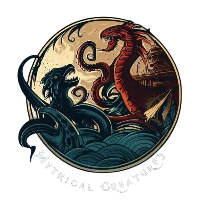
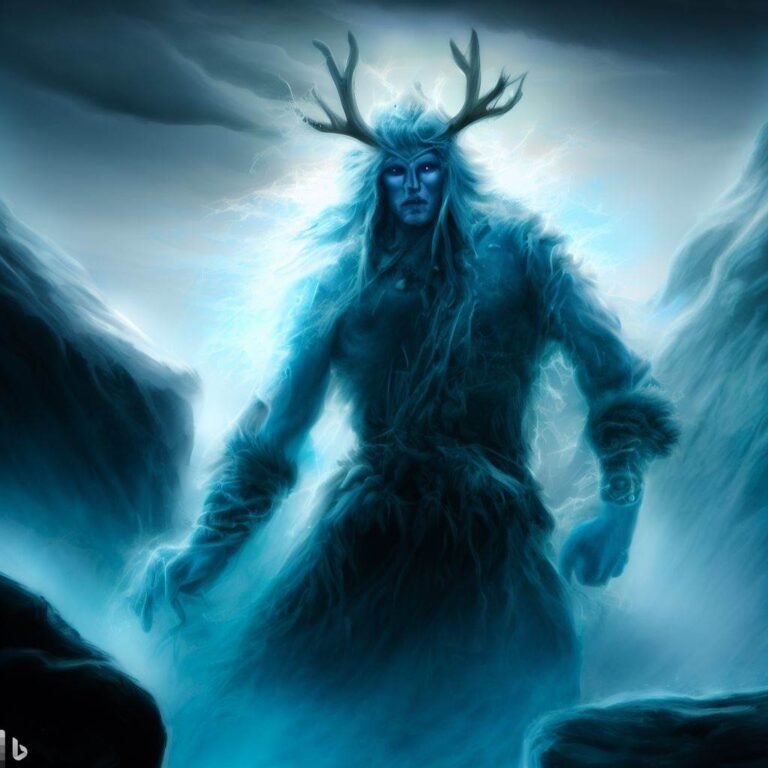
![Rán - The Norse Goddess of the Sea [Pics and Facts] 6 mythical creatures art Rán – The Norse Goddess of the Sea [Pics and Facts]](https://mythicalcreatures.blog/wp-content/uploads/2023/08/Ran-Norse-mythology-artwork-Goddess-of-the-sea-768x768.jpg)
